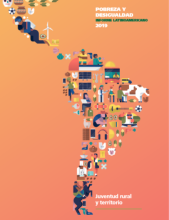Land Library Search
Through our robust search engine, you can search for any item of the over 73,000 highly curated resources in the Land Library.
If you would like to find an overview of what is possible, feel free to peruse the Search Guide.
/ library resources
Showing items 1 through 9 of 68.The year 2023 marked another significant milestone in the ongoing effort of the Resilient AgriLAC initiative to establish and strengthen the Innovahubs in Central America.
The implementation of activities in 2023 is focused on integrated emissions reduction and sustainability, as well as promoting investments in value chains oriented towards national and regional objectives of adaptation and mitigation of climate change, poverty, social inclusion and biodiversity.
Under the Latin American Regional initiative AgriLAC Resiliente, the establishment of Innovahubs in Guatemala and Honduras has been a pivotal focus.
The participation, engagement, and interaction of local actors in the Innovahubs is an essential part of the development and strengthening of the subnational innovation systems, so knowing and understanding the nature, identity and presence, and involvement of each type of actor over time is esse
Este documento se presenta como aporte de la FAO en Colombia a través del Proyecto Gobernanza y Paz, que cuenta con el apoyo de la Embajada de Italia y la Agencia Italiana de Cooperación para el Desarrollo.
En 2020, las emisiones de carbono se han reducido drásticamente a causa de las restricciones impuestas por la pandemia de COVID-19. Sin embargo, la crisis climática, desencadenada por la acumulación de emisiones en la atmósfera a lo largo del tiempo, ha seguido agudizándose.
Cada dos años, desde 2011, Rimisp – Centro Latinoamericano para el Desarrollo Rural, publica su Informe Latinoamericano sobre Pobreza y Desigualdad, como un aporte a la discusión sobre estas temáticas desde la perspectiva particular de la desigualdad territorial, una de las aristas menos abordada
El presente documento ODS Y DESARROLLO TERRITORIAL.
Desde el giro neoliberal de la economía peruana, el gran agronegocio corporativo y latifundista se ha posicionado como el modelo de desarrollo de la actividad agraria en el Perú, en detrimento del campesinado y de la agricultura familiar.






